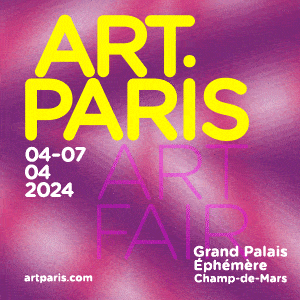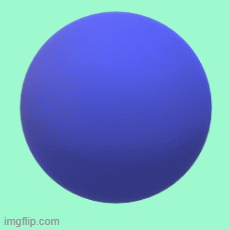Whitehot Magazine
May 2024
"The Best Art In The World"
"The Best Art In The World"
May 2024
November 2010, Interviews Jill Conner on Core and Mantle

Rob van Erve “Stare Decisis” (2010)
Wood and nylon string 41” x 41” x 40”
Kofi Forson Interviews Jill Conner on Core and Mantle

Core and Mantle, a group show curated by writer and curator Jill Conner, premiered at M55 on September 23, 2010 and closed on October 9, 2010. The main purpose of the exhibition was to explore the “multi-layered manifestation of contemporary collage across an array of artistic media.” Among the diverse range of materials were stone, wood, fabric and paper. Much of this was a commentary on our post-consumerist society, a world in the future where cityscapes assume character as heroic models whereby the nobility of men becomes seemingly virtual. As works of collage these art pieces play on the idea of abstract art, that the shapes and figures, once dissected and arranged, evenly take on the form of the abstract. With Core and Mantle, Jill Conner has succeeded in finding a diverse group of artists who manipulate texture, shape, color and design, colors at once dominated by multiplicity then rendered in more painterly tones. In doing so they create a wide array of art works that pose the question: Does modern art contribute to the history of art as interpretative, or is it more or less “an object of adornment,” simply a painting on the wall of a person’s living room.


Kofi Forson: Core and Mantle references the various layers of the earth. The exhibition formally addresses the manifestation of contemporary collage. I sense a greater theme in texture, shape, color and design. How were you able as curator to find the diversity among these artists who were then able to meet the same conclusion?
Jill Conner: I was most interested in capturing various types of texture and wanted to explore how shape and color influenced the perceived appearance of the tactile, layered surface. The selection of the artists was rather random, although I have known most of them for quite a while, through either studio visits or seeing some of their work in previous exhibitions. However the fact that everyone reached the same conclusion was serendipitous and a pleasant surprise.
Forson: How did you come about the physicality of the space from the transparent full-length windows to the accommodating interior? Certainly the dialogue is both public as people outside can see into the show as well as intimacy among those inside. Was this intentional to form a sense of congruence between the artwork within the space and its association with the world outside?
Conner: Not to sound too Brechtian, but the full-length window at M55 is the gallery’s fourth wall, an added strength that I felt enhanced the exhibition. Again, the choice of space was not intentional and occurred on a whim. In fact, I had initially planned this show to appear in much different space. One that is not as open to the street, not as visible architecturally. When art can make a connection beyond the gallery setting, it carries with it a certain kind of dynamism.
Forson: Much of this exhibition is represented as a commentary on modernity. In Emily Garfield’s wall installation, paper pop-ups of big city buildings emerge three-dimensionally. Do these buildings almost become like characters and does the relevance of its populace diminish. It seems as if the buildings are symbolic making people rather virtual.
Conner: Emily Garfield’s pop-up cityscapes are quite literal when compared to the rest of the works seen in “Core & Mantle.” However exhibiting these meticulous cut-outs in the main hallway leading into the gallery served as a good lead-in – a precursor to the mélange of materials and imagery that seems to appear, disappear and reappear within the main room.
Forson: Nola Zirin’s framed collage near the main entrance somehow revives the relevance men have to a big city depicting two men in top hats. Do they represent a sense of history and evolution? Is heroism therefore symbolized in man-made structures and not man?
Conner: I had never made the connection with this work and the idea of the big city based upon the outfits depicted - nor to the idea of heroism. But you have a point since this does carry the essence of a Cavafy poem titled “The City.” (1910) When Nola first showed me this piece, I was drawn to its historic, antiquated character. It seemed like a perfect metaphor for the show, which was examining the contemporary use of an early Modern process.
Forson: Her “Untitled” (2010) triptych is modern in its use of color and design. It seems excessive, like a pronouncement on glamour and money. Does art and intellect equate money? Or will society forever think of money as wealth and monetary gain?
Conner: Yes, Nola’s work starts with the square but she expands this very common shape into a multi-dimensional surface with significant visual depth. Although the surfaces are shiny and glamorous, there doesn’t seem to be a direct connection to money. In fact in this piece the anonymous portrait that appears on the far left is more interesting.
Forson: Overall there’s a sense of texture. In Drew Shiflett’s “Untitled” (2008) piece, for example, the graininess would suggest sand. How has texture materialized in popular culture?
Conner: Drew Shiflett’s “Untitled,” is an intricate combination of thread, ink, glue, paper and crayon. However it initially looks like a woven, two-dimensional piece. Everything changes when you step closer and look at the detailed layering. I felt the same about Carol Bruns work, too, except hers is more three-dimensional and carries an extra component - a framed photograph - as part of it. Texture is a big part of both artists work and is a primary theme in the rest of the show, as well, focusing on the ways other materials are used to expand the pictorial surface.
Forson: Much of modernity can be attributed to the subcultures of fashion and pop art. The cartoon-like aspect in Koren Christofides’ “Fashion Drawing # 12” (2008) captures this very fact. How has fashion dominated society’s conscience with the make-over shows, Vogue’s Anna Wintour’s presence and Fashion Week?
Conner: Koren Christofides is most interested in what fashion and pop art do not tell us. By removing these materials and signifiers from mundane contexts, the artist calls attention to meaning, order and what we use to construct our own identities. I’m not sure that Anna Wintour has anything to do with this since fashion, its models and stereotypes have been around much longer.

Koren Christofides, Fashion Drawing #12, 2008
Embroidery and mixed media 38” x 29”
Forson: Patricia Satterlee titled her series “Red Heads.” (2009) I read recently how the redhead girl is soon to be extinct. How much of this is a reflection on identity and exclusion from society.
Conner: Patricia Satterlee’s work focuses on the subjective nature of colors and layers. Although you or I might think of a specific, she is focused on something entirely different, on what is between us or around us that we don’t see. Her work is very metaphysical and disconnected from material associations.

Patricia Satterlee, Red Heads #1, 2009
Paper, ink, cut paper 5 1/2” x 7 1/2”
Forson: I find the most transcendental piece to be Pat Lay’s “Life Support.” (2008) It’s very much a visible thing, at once cinematic and yet evolving lyrically. What’s your impression of this particular piece?
Conner: I favored the placement of a machine part over that of a human portrait. Pat Lay pieces together our strong attachment to technology. Her work is also a critique of the computer fetish through its distortion of an individual’s identity, giving more prominence to the frame of a computer hard drive. Put simply, we are very close to living pure artificial lives.
Forson: I truly love Cordy Ryman’s particular attention to warmth and that feeling of home in each piece, the use of color and that hands-on approach. What drew you to his work?
Conner: The random use of materials was what I found most interesting. In Cordy’s work, one sees the antithesis of an ideal: there is no attempt to both follow a tradition and be beautiful. Rather, his work breaks away from the mainstream of smooth imagery. There are definitely associations one could make to either Frank Stella or Donald Judd, but Cordy’s shameless mix of media is what sets his work apart and keeps it more closely connected with the visual vernacular of today.

Cordy Ryman, Scaps on Sprap, 2009
Acrylic, enamel, staples and glue on found object (table sample) 12” x 12” x 4”
Forson: Pavel Kraus’ white marble piece titled, “Offering/Redemption,” (2009) is very much an example of sophistication. How do you separate from its relevance as an eye-catching marble sculpture that fetches for a high-price and also renders itself as a work of art? Art can, and does at times, become a piece of merchandise. How then does it resonate as art?
Conner: Pavel’s work draws upon a larger history of stone-inlay sculpture. The question as to price does not seem to be as relevant when looking at the perfect composition of the piece. Because his work uses such exquisite materials, these two sculptures are placed more firmly in the scope of fine art.
Forson: The Pop Art appeal of Janet Nolan’s “Twister” (2002) is quite endearing. Does it make you smile, laugh and dance as much as it does me? It’s quite a lovely piece.
Conner: “Twister,” definitely reflects the object that it is made of: a series of broken umbrellas. This rainy day object is usually more irritating to use than what is first expected. So I was drawn to the fact that Janet broke down these pieces even further and then built them up into a totally different object that was suspended from the floor.

Janet Nolan, Twister, 2002
Recycled umbrella fabric and frames, wire 45” x 16” x 18”
Forson: Rob van Erve’s “Stare Decisis” (2010) is such a Cubistic work of art. With reference to a previous question, how does art serve its role as an object adorning a room and still be relevant to art history?
Conner: Or is art meant to be an object of adornment? Good question, although I don’t think art has to be an object of complacency either. Rob’s work is by far not as decorative as it is bold. This piece in particular appears symmetrical from the start, but the base is offset and causes the work to tilt. The materials, moreover, are not remarkable, tempting anyone to think that this might be an interactive sculpture. Regardless, this piece is not meant to be handled even though it may appear that way.
Forson: How then do these works of art manage to address the sophisticated nature of modernity and the future tantamount with the artificiality of technology and how does that change the way humans interact or don’t interact?
Conner: All of the art exhibited in "Core & Mantle" served as a critique against the current post-industrial, tech-driven economy that we find ourselves in now. The internet and social media, for instance, are both a further push away from interpersonal, tactile communication - such as handwritten letters. Instead there is a decrease in face-to-face interaction. So in terms of your question about the future - "Core & Mantle" analyzed these fast-evolving changes in a return to the use of layered, traditional media, while exposing the vast difference that exist between the virtual and the material.

Kofi Forson
Kofi Forson is a writer, POET and PLAYWRIGHT living in NYC. His current blog is BLACK COCTEAU, a mixture of philosophy and art on modern culture.
Email: lidonslap@gmail.com








